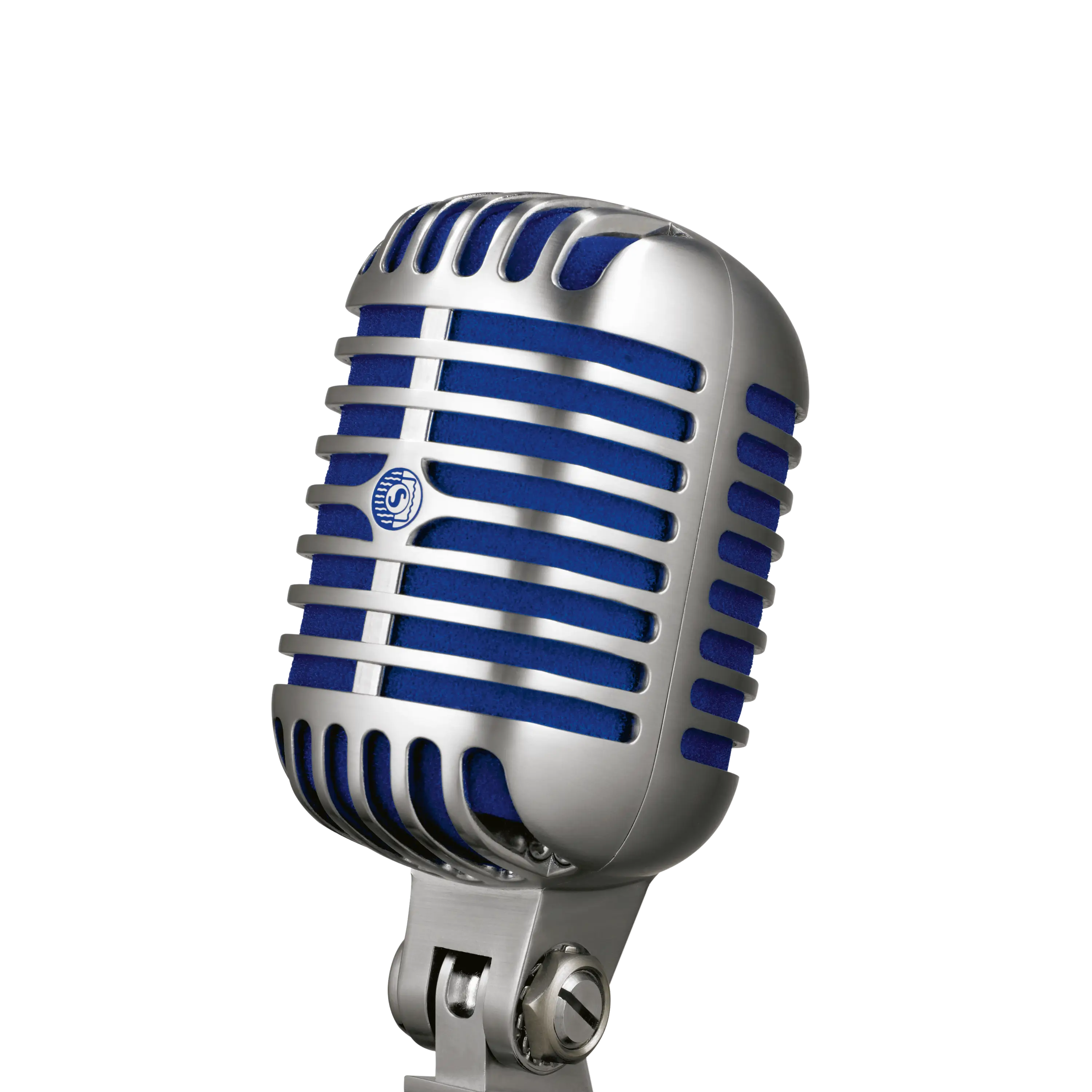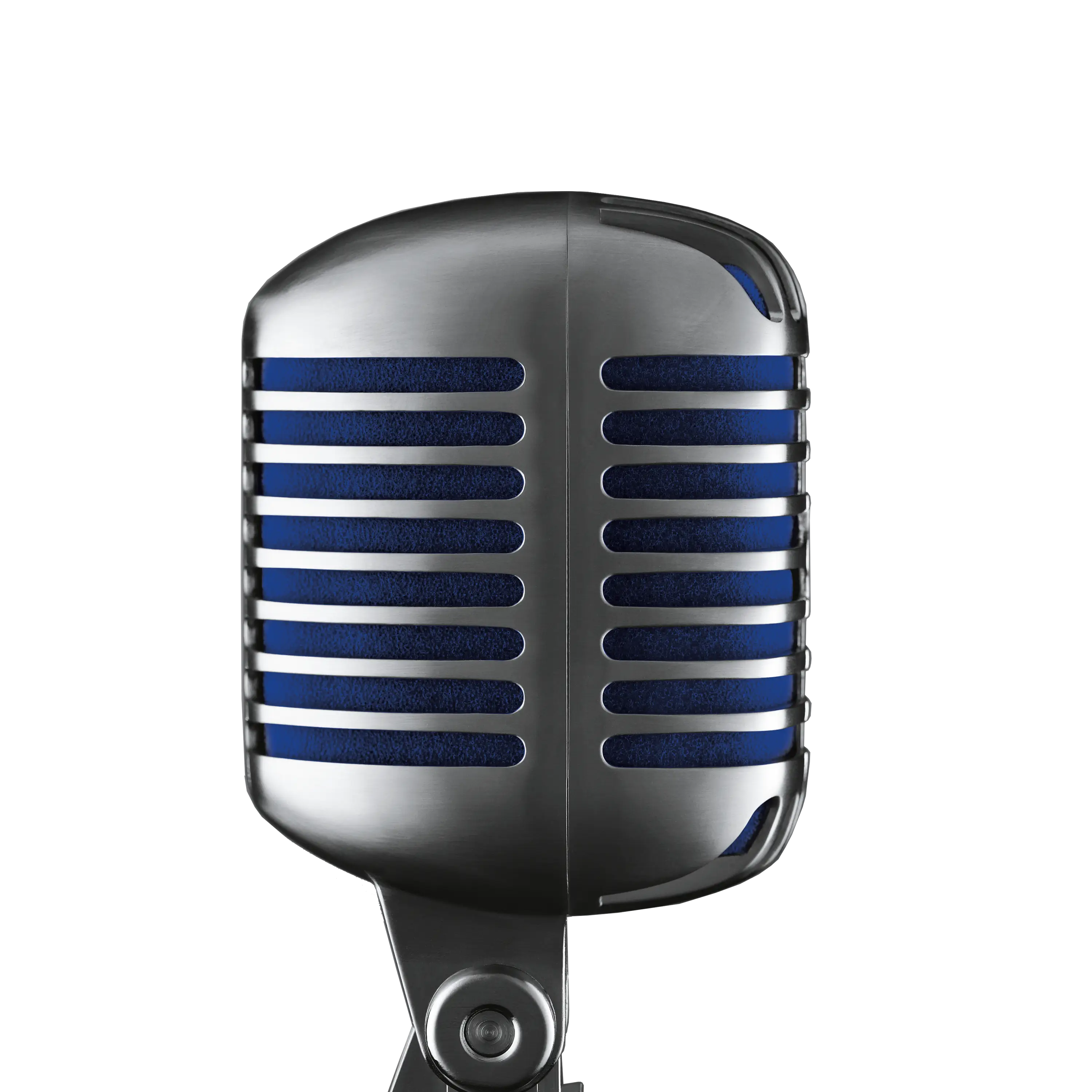Choosing the Right Mic

"Which Shure microphone is best for me?" is one of the most common questions our product support team receives. While it's true that sound is subjective, that doesn't mean the answer is, "I dunno [shrug]. Good luck."
Our in-house experts advise that considering two factors— application and budget—will narrow down your list of contenders from every mic in the catalog to a manageable handful. Once you do that, the next step is to trust your ears. If you like the way it sounds, then it's the right mic for you. Also, think about where the mic fits in your overall sound system. If you're using a basic system, for example, it doesn't make sense to connect a top-of-the-line microphone to it. The basic system won't allow for the expensive mic's rich feature set to be heard. It's both cheaper and more effective to match apples to apples.
Check out this handy list, organized by application, and you'll be able to mic the core instruments of most bands. We've included both the why and the what in our recommendations, with products on a scale from value-priced to feature-rich.
VOCALS

Polar Pattern:
Cardioid polar patterns help control feedback and reduce ambient sound in most cases. If you're on a tight stage, consider a microphone with a supercardioid polar pattern, which is narrower than the cardioid.
Frequency Response:
Most mics for close-up vocals share a similar frequency response that features rolloff of the extreme high- and low-end frequencies that are outside the normal vocal range, plus a boosted mid-range. This is called a shaped frequency response.
Cartridge Type:
Dynamic cartridges contain fewer components that could fail, and they don't require phantom power, so they're often preferred for live sound. Condenser mics require phantom power, but if you need a brighter sound with extended highs, then a condenser might be a better option.
Tips:
As a general rule, the more you spend on a vocal mic, the less handling noise and breath noise you're likely to experience due to improvements in the mic's shock mount and pop filter. Leaving the mic in the stand rather than holding it can mitigate handling noise, however, and using a windscreen can reduce breath noise.
Product suggestions from value-priced to feature-rich:
PGA58, SM58®, SM86, BETA 58A®, Super 55, BETA® 87A, BETA® 87C, KSM9, KSM9HS
DRUMS

Polar Pattern:
For all parts of a drum kit, the cardioid and supercardioid polar patterns are best at isolating the sound and controlling feedback.
Frequency Response:
For kick drum and snare and floor toms, mics with a shaped frequency response are best. They capture low frequencies and add punch to the kick drum. They also feature extreme high- and low-end frequency rolloff and a boosted mid-range that are ideal for use with the snare and floor toms. Overhead cymbals and hi hats benefit more from mics with a wide and uniform response typically referred to as a flat frequency response.
Cartridge Type:
Dynamic mics are usually recommended for kick drums and snares because they can handle the high sound pressure levels, but condenser microphones can deliver more snap. You just have to make sure to choose a condenser that can withstand the high SPLs. Likewise, floor toms are usually miked with dynamics, but Shure makes a condenser mic specifically for that application: the BETA®98A D/C. Condenser mics are best for overheads and hi hats.
Tips:
Because they don't require a mount, boundary microphones like the BETA®91A are an easy way to mic kick drums and provide a nice round sound. Just place the mic on a pillow inside the drum. Alternatively, you can mount a stand-mounted kick drum mic inside the drum or through a hole in the front. For toms, placing one cardioid mic between them can effectively mic the pair.
Product suggestions from value-priced to feature-rich:
Kick Drum: PGA81, PGA52, SM81, BETA®91A, BETA 52A®
Snare Drum: PGA57, PGA56, SM57, BETA 56A®, BETA 57A®
Toms: PGA56, PGA98D, PGA181, BETA 56A®, BETA®98A, BETA®98AMP, BETA®181
Overhead & Cymbals: PGA81, SM81, SM137, KSM137, KSM141, KSM32
Hi Hat: PGA81, SM81, SM137, KSM137, KSM141, KSM32
Kits: PGADRUMKIT5, PGADRUMKIT7, PGASTUDIOKIT4, DMK57-52
GUITAR AMPS & BASS AMPS

Polar Pattern:
A cardioid polar pattern is useful at isolating the sound and controlling feedback.
Frequency Response:
A shaped frequency response adds a presence and brightness to the sound.
Cartridge Type:
A dynamic cartridge is best because it's unlikely to distort under normal sound pressure levels, regardless of where the mic is placed in relation to the amplifier, or how loud the amplifier is turned up.
Tips:
You see SM57s all the time on guitar and bass amps, but did you know that the frequency response of a guitar amp resembles that of the human voice? That's why sometimes, you'll see vocalists use the SM57 too. In fact, it has the same cartridge as our go-to live vocal mic, the SM58, but the grill of the SM58 gives it a slightly different frequency response.
Product suggestions from value-priced to feature-rich:
PGA57, SM57, BETA®27, BETA®56A, BETA®57A, KSM313
ACOUSTIC GUITAR

Polar Pattern:
A cardioid polar pattern is useful at isolating the sound and controlling feedback.
Frequency Response:
To capture the full range of guitar tones and playing dynamics, a flat frequency response is best, or a slightly boosted high end.
Cartridge Type:
Condenser mics give acoustic guitars a smoother, more natural sound.
Tips:
Mic placement can influence the sound you get as much as any mic characteristic can, so experiment with positioning. Placing the mic nearer to the neck delivers a thinner, high-frequency sound while placing it nearer the bridge creates a more mellow, woody, low-frequency sound.
Product suggestions from value-priced to feature-rich:
PGA27, PGA81, SM27, SM137, SM81, BETA®27, BETA®181, KSM32, KSM137, KSM141, KSM44A.




